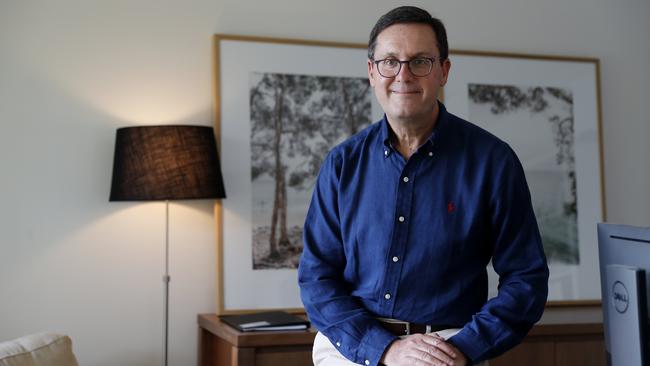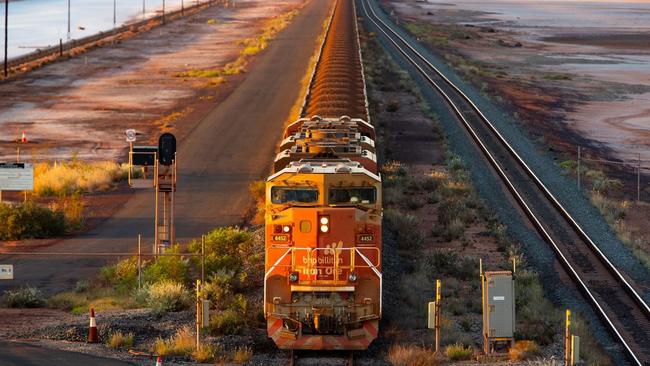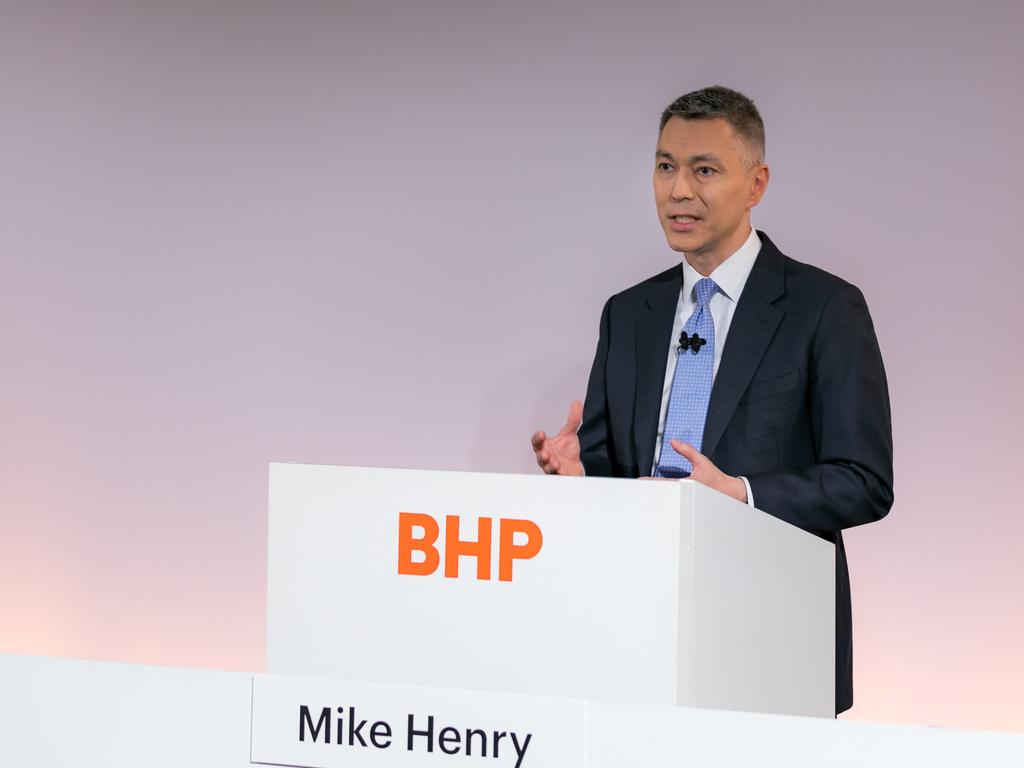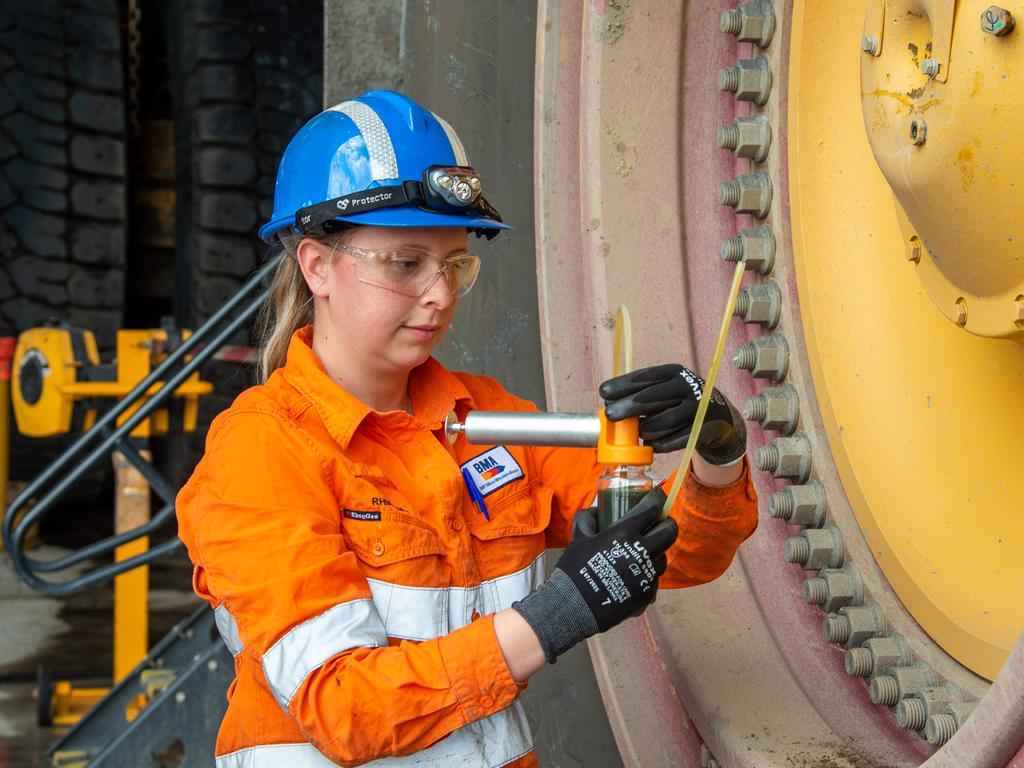How BHP repaired its battered public image
How do you repair the image of an industry tarnished by decades of allegations of greed, environmental destruction, human rights abuses and tax avoidance?

How do you repair the image of an industry tarnished by decades of allegations of greed, environmental destruction, human rights abuses and tax avoidance?
You start with reshaping the way the biggest miner in the world makes decisions, according to outgoing BHP chief external affairs officer Geoff Healy, and embed the non-financial values of society alongside the profit-making imperative.
“For BHP, we have not seen any shift in our business in the last five years greater than the movement in societal expectations,” he tells The Australian.
The pressures are partly generational, as major fund managers compete for the attention of millennials now approaching their prime earnings power. But they are also a reflection of broader shifts in the capital markets triggered by the global financial crisis more than a decade ago, according to Healy, as well as the growing urgency for action on climate change.
“You can probably track it back to the GFC. I think you can point to the power of social media, I think you can point to the fact that there’s been these huge global tensions in the world that have caused capital, particularly, to understand the significant role it plays in bringing about change and change quickly,” he says.
“We are ultimately owned by society, and these huge asset managers that now attract such enormous funds are also being expected by society to hold the companies they invest into account.
“What has been interesting is the challenge that some of the fund managers put to us, which is to tell our story, and tell it more effectively, in the investment market, with a particular eye to the millennials.”
Healy joined BHP in 2013 as the mining giant’s chief legal counsel but in 2016, in the wake of the tragic tailings dam failure at Samarco in Brazil the year before, the former Freehills lawyer was elevated to head a super-portfolio covering off all of BHP’s non-financial risks as its chief external affairs officer.
That role delivered him global accountability for all of the group’s non-financial risks — legal, external affairs, compliance, health and safety, the environment and internal audit.
On the face of it, the role gave Healy the responsibility of safeguarding BHP’s public image and reducing its legal risks.
In reality, it made him the chief architect of BHP’s efforts to re-make the mining giant’s own image of itself as the company faced the “chill of the winds of change” flowing from the global financial crisis a decade ago, and change the way it makes business decisions in a world becoming rapidly more uncertain by the day.

When Healy joined BHP Australia’s big miners had successfully fought a massive public battle against the Rudd government’s Resources Super Profits Tax, centring on their roles as job creators and drivers of the Australian economy.
But within a few years commodity prices had turned and BHP and Rio Tinto were slashing their workforces to make them fit for the post-boom era, and maintain their extraordinary margins from the Pilbara.
And as staff cuts undermined the reputation of the big miners among their own workforce, their families and the broader community, iron ore miners were again facing a political push to contribute more cash to government coffers — this time from WA’s National Party, which took a $5 a tonne levy on BHP and Rio to the 2016 state election.
At the same time BHP was fighting off allegations from the Australian Taxation Office that it had avoided paying tax by channelling iron ore sales through its Singapore mining hub.
Combined, a storm was gathering above the mining industry.
“We exist, more than just about every other sector, with the permission of our communities. And we also know, increasingly, that people don’t want to work for or invest in a company that isn’t in step with society,” Healy says.
“We felt the chill of the winds of change about four or five years ago. It was triggered by a lot of things, but particularly by the collapse in commodity prices, and by then the corresponding drop in investment. At the same time, we were facing into the iron ore tax campaign in our heartland in WA. And we had, of course, the Samarco tragedy in late 2015. So the music had very much stopped for us by 2016. And we really felt the seriousness of that moment.”
Over the last few years BHP has taken a more public stance on the economic risks that flow from climate change — former chief executive Andrew Mackenzie described it in 2019 as an “existential threat” to the world — and has pushed beyond its purely business interests on Indigenous issues, last year endorsing the Uluru Statement from the Heart, with its goal of enshrining a First Nations Voice in the Australian constitution.
Those shifts have attracted criticism from the left and right of politics. They have been dismissed as “greenwashing” at odds with BHP’s actual behaviour by the left, who point to the miner’s decision to remain in the oil and gas business despite moving away from thermal coal. For conservative politicians and commentators they are a sign the company is on a path from “woke to broke”, giving up its core business interests to bow to the whims of a vocal minority.
But at the heart of BHP’s changes, according to Healy, is an attempt to place “social value” — including its position on climate change, water use, Indigenous issues, tailings dams, broader human rights concerns — as a key factor to be considered in every one of the thousands of decisions made by its managers every day.
That means going beyond rhetoric, or even an approach to risk management, to considerations of how BHP is viewed by the communities in which it operates as a key metric alongside financial outcomes.
But for Healy, a change to BHP’s purpose statement in 2019 was both the culmination of a decade-long shift in the way its major investors view the world, and the key to BHP’s future in uncertain times.
“Our longstanding purpose was ‘to create long-term shareholder value’. That’s not the purpose, that’s an outcome. You don’t show up to work for that. That’s not the why,” he says.
“So we’ve moved to ‘bringing people and resources together to build a better world’. We needed an accurate statement to fit at the very apex of BHP as to why we exist. And it has become part of the fabric of the place,” he says.
The change to BHP’s purpose is more than superficial, according to Healy, as BHP tries to put metrics around those “social values” to back the judgment of managers faced with a trade-off between budgets and social expectations.
“We’re starting to run some metrics alongside the financial results. We’ll keep maturing those when we’re working out how you capture the value of the trade-off,” he says.
That aspect of the strategy required some “hard-headed” conversations with both BHP’s board and major investors, according to Healy.
“We’ve talked about that with the board, we talked about that very issue. But when you go out and talk to general managers all through the world, one of the things they say they regret is letting some of that ground go from 2012 through to 2016. And it took us time to recover that ground. This is not a fair weather friend. And, in fact, when times get tough is when you need it even more. The proof will be in the pudding,” he says.
“Social value is about how you make decisions, understanding every business decision has a social side to it. You stare at that, and you must make the right judgment. Some things are capable of being traded off, and some things are not. And that’s why social value needs to be imbued in the place, like safety is.”
But BHP prides itself on the long-term nature of its operations. When you plan to be operating in a community for the next 50 years, their view of you matters. And while Healy has now hung up his gloves at the mining major, and departs at the end of the year, he believes the changes he helped bring about will ultimately underpin its future profits, not undermine them. “The prize is there if you can get this right. If we can do it, we’ll get the best talent, well get the best resources and access to the best markets, and it will be a competitive advantage.”





To join the conversation, please log in. Don't have an account? Register
Join the conversation, you are commenting as Logout